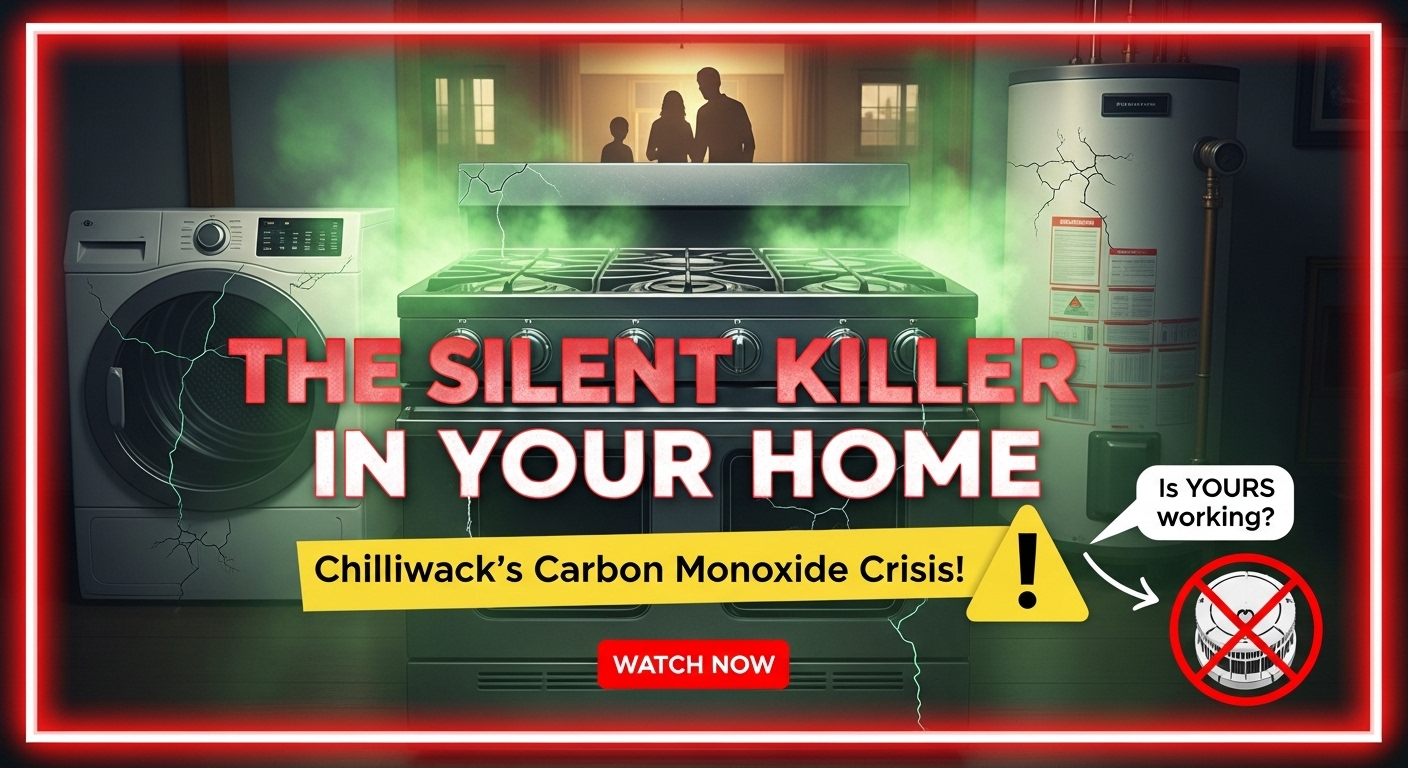Wondering if your gas stove, dryer, or water heater could be silently poisoning your family? This comprehensive guide reveals the hidden carbon monoxide dangers lurking in Chiliwack homes and the life-saving inspections every homeowner desperately needs.
Picture this: you’re making breakfast on a chilly Chiliwack morning, your gas stove humming away like it has for years, when suddenly you notice something’s off. Maybe the flames look a little yellow instead of their usual crisp blue, or there’s a faint smell you can’t quite place. What you might not realize is that you could be witnessing the early signs of a silent killer making itself at home in your kitchen. Carbon monoxide – that sneaky, odorless gas that’s claimed more lives than most people realize – doesn’t announce its presence with dramatic flair. It just quietly goes about its deadly business while we go about our daily routines. As someone who’s spent countless hours researching home safety (because let’s be real, adulting is scary enough without invisible threats), I’ve discovered that gas appliances are basically ticking time bombs if we don’t treat them with the respect they deserve. We’re talking about appliances that heat our homes, cook our meals, and dry our clothes – the very things that make our houses feel like homes. But here’s the kicker: when these trusty appliances start malfunctioning, they can turn from helpful household heroes into silent assassins faster than you can say “carbon monoxide poisoning.”
The stats are honestly terrifying when you dive into them. We’re looking at a genuine public health crisis that’s hiding in plain sight, right in our own homes. Gas appliances gone rogue are responsible for way more deaths and injuries than most people realize, and the crazy part is that almost all of these incidents are completely preventable with the right knowledge and maintenance practices.
Key Outtakes:
- Gas appliances can produce lethal levels of carbon monoxide when not properly maintained, with heating systems alone responsible for 29% of all consumer product-related CO deaths
- Yellow or orange flames from gas appliances indicate incomplete combustion and potential carbon monoxide production – blue flames are what you want to see
- Professional annual inspections can detect dangerous conditions before they become life-threatening, using specialized equipment that measures precise CO concentrations
- Carbon monoxide symptoms mimic flu-like illness but affect entire households simultaneously and improve when people leave the home
- Proper ventilation and professional installation by licensed gas fitters are absolutely critical for preventing CO accumulation in modern energy-efficient homes
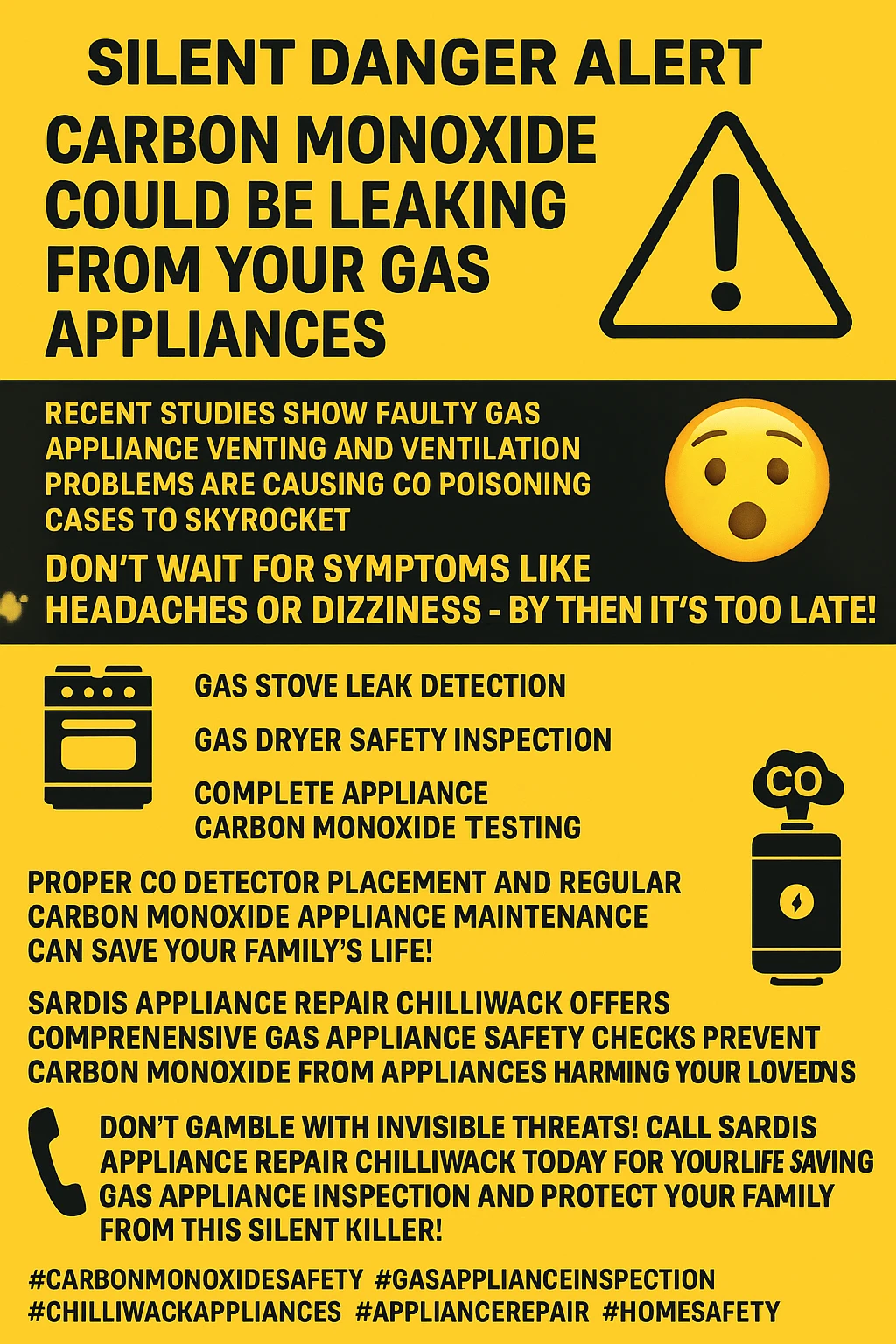
Understanding the Invisible Killer in Your Home
So let’s talk about what we’re actually dealing with here, because carbon monoxide is like that friend who seems harmless but is actually a total psychopath. This colorless, odorless gas forms when carbon-containing fuels don’t burn completely – think of it as combustion’s evil twin. When your gas appliances don’t get enough oxygen or when something’s blocking their ability to burn cleanly, they start producing this nasty stuff instead of the harmless carbon dioxide they’re supposed to make.
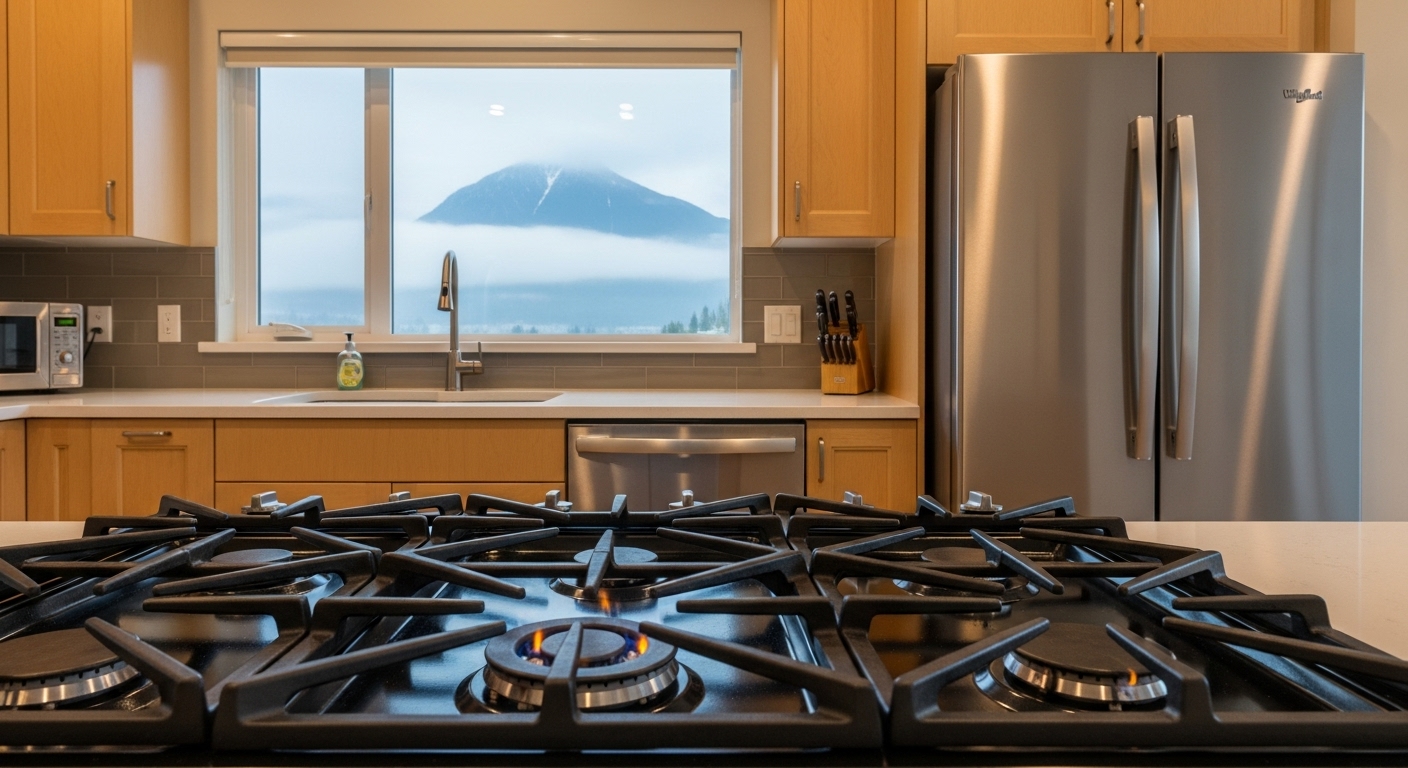
The scary science behind it is that carbon monoxide has this creepy obsession with your red blood cells – like, it loves them about 200 times more than oxygen does. So when you breathe in CO, it basically kicks oxygen to the curb and hitches a ride on your hemoglobin instead. Your body thinks everything’s fine because your blood looks normal, but your organs are slowly being starved of the oxygen they need to function. It’s like being suffocated from the inside without even knowing it.
What makes this whole situation even more messed up is how little CO it actually takes to cause problems. We’re talking about concentrations measured in parts per million – that’s like finding a few drops of poison in an Olympic-sized swimming pool. Even exposure to 70 parts per million over several hours can start making healthy adults feel sick, while levels above 400 ppm can literally kill you in less than three hours. The really twisted part? These dangerous levels can build up incredibly fast in a home with malfunctioning gas appliances.
Your house’s gas appliances create carbon monoxide through several different ways, and each one is like a different horror movie plot. Natural gas appliances – your stoves, water heaters, furnaces – can start pumping out CO when their burners get dirty or knocked out of alignment. It’s like when your car engine starts running rough because it needs a tune-up, except instead of just poor performance, you get a potentially lethal gas as a bonus. Propane appliances have their own special brand of danger, especially when regulators malfunction or when people push them beyond what they’re designed to handle.
Gas Stoves: When Your Kitchen Becomes a Crime Scene
Moving from the technical stuff to the real-world dangers lurking in our homes, let’s start with the appliance that probably gets the most daily use – your gas stove. I know, I know, gas stoves are amazing for cooking (ask any chef), but they’re also sneaky little carbon monoxide producers when things go wrong. The Consumer Product Safety Commission tracked gas ranges to an estimated 3 deaths from carbon monoxide poisoning in 2020, and honestly, that number probably doesn’t tell the whole story because it’s really hard to pin down exactly which appliance is the culprit when CO poisoning happens.
Here’s your first line of defense: become a flame detective. I’m not even kidding – the color of your stove’s flames can literally save your life. When everything’s working properly, you should see crisp, blue flames that burn steady without doing this weird flickering dance or belching out visible smoke. But if you start seeing yellow, orange, or red flames, that’s your stove basically sending up a flare saying “Help! I’m making poison!” Yellow flames are particularly concerning because they’re screaming that the air-to-fuel ratio is completely screwed up. 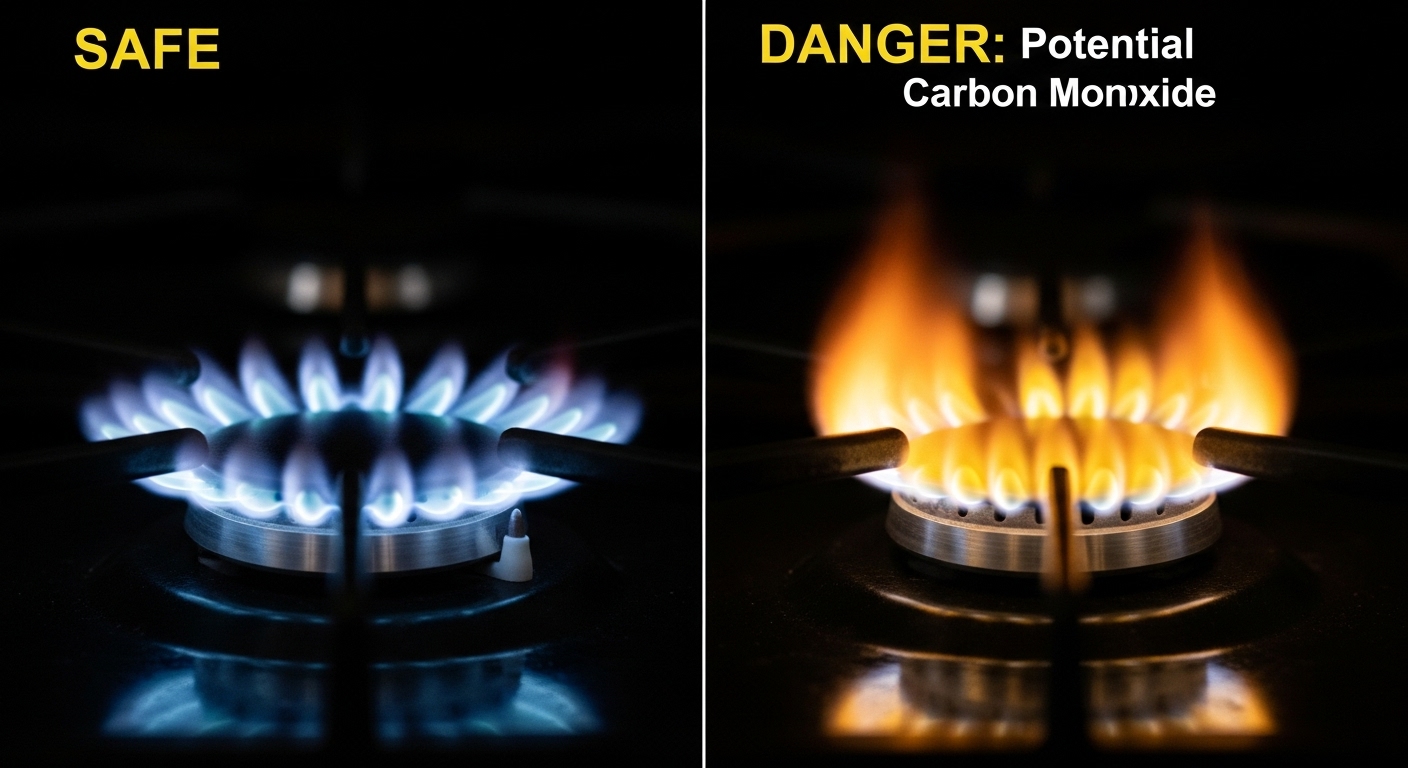
The thing about gas stove installation is that it’s absolutely not a DIY weekend project, no matter how many YouTube videos you’ve watched. Professional gas fitters don’t just hook up the gas line and call it a day – they’re basically detectives making sure everything is perfect. They calibrate gas pressure, test every single connection for leaks, and make sure your kitchen’s ventilation can actually handle removing all the combustion byproducts. It’s like having a safety inspector, engineer, and paranoid helicopter parent all rolled into one person making sure your stove won’t try to kill you.
Gas leak detection around stoves requires you to channel your inner Sherlock Holmes, using both your senses and some neat tricks. The sulfur smell (that rotten egg odor) is your primary warning system, but here’s the thing – your nose can get used to it over time, or small leaks might not smell strong enough to notice. The soap bubble test is like a magic trick for finding leaks – just mix up some soapy water and dab it on gas connections. If bubbles start forming, congratulations, you’ve found a leak that needs immediate attention.
Maintaining your gas stove is like maintaining a relationship – ignore it, and things can go dangerously wrong. You’ve got to clean those burner heads regularly to remove all the grease and food particles that love to clog up the works and mess with proper airflow. When burner ports get blocked, your flames start looking funky and your stove starts making CO instead of just heat. Professional maintenance goes way deeper, checking gas supply lines, testing safety valves, and making sure gas pressure is exactly where it should be for clean, safe burning.
Water Heaters: The Basement Monsters
Now let’s venture into the dungeon – I mean basement – where your water heater lives. 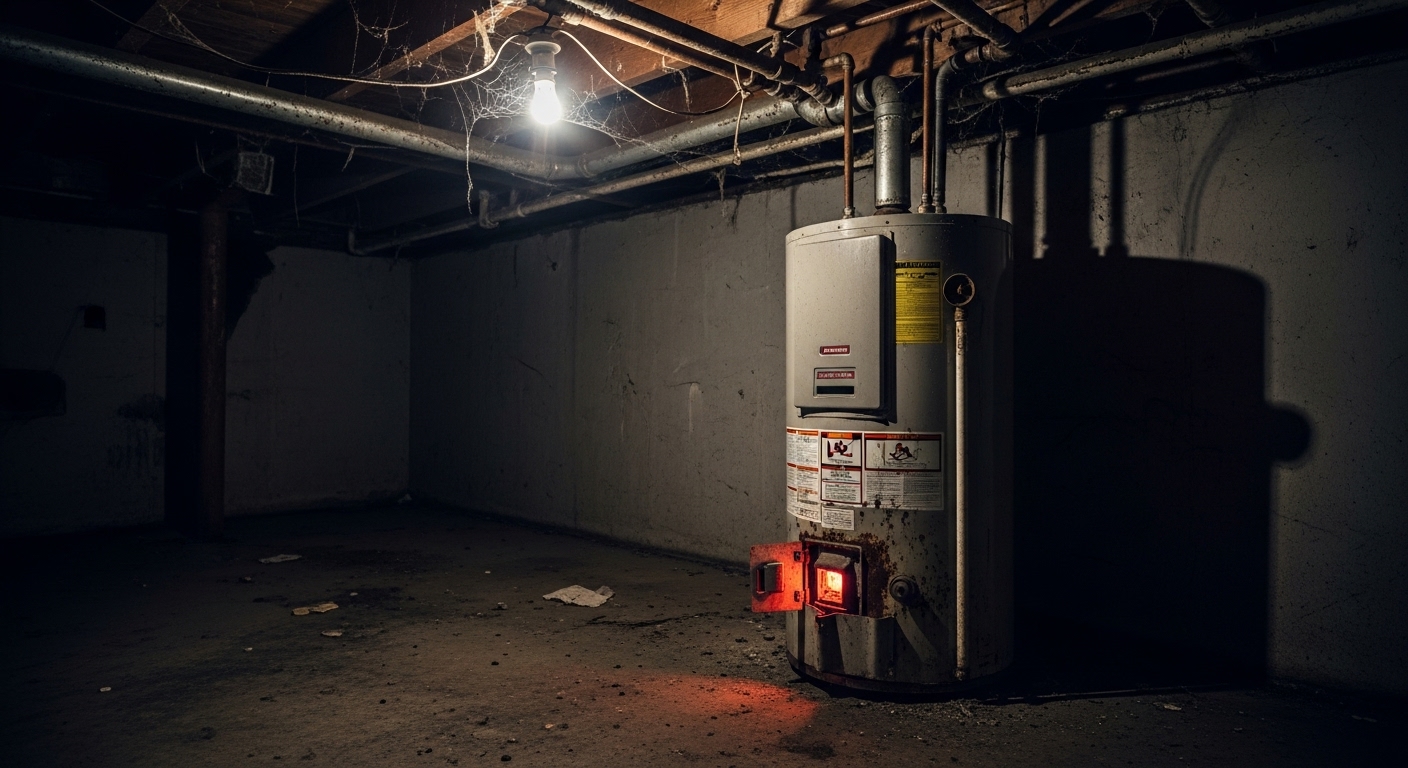 These things are particularly sneaky because they’re usually tucked away in utility areas where you might not notice problems for weeks or months. Plus, they run continuously, which means if something goes wrong, you’re getting a steady stream of carbon monoxide pumped into your home 24/7. It’s like having a carbon monoxide factory in your basement that you forgot was there.
These things are particularly sneaky because they’re usually tucked away in utility areas where you might not notice problems for weeks or months. Plus, they run continuously, which means if something goes wrong, you’re getting a steady stream of carbon monoxide pumped into your home 24/7. It’s like having a carbon monoxide factory in your basement that you forgot was there.
The really messed up part about water heaters is this thing called “orphaning.” No, it’s not as sad as it sounds, but it is dangerous. When people upgrade to high-efficiency furnaces that vent through those white PVC pipes, they sometimes leave the old, larger chimney flue for the water heater alone. This oversized flue can lead to poor drafting, causing exhaust gases, including CO, to spill back into your home. This backdrafting is a classic cause of chronic, low-level carbon monoxide exposure that can have serious long-term health effects.
Frequently Asked Questions About Gas Appliance Safety
What are the first signs of a carbon monoxide leak from a gas appliance?
The earliest signs are often subtle. Look for yellow or flickering flames on your stove, soot or staining around the appliance, or a lack of an upward draft in your chimney. Physically, you might experience flu-like symptoms such as headaches, dizziness, or nausea that affect everyone in the house and improve when you go outside.
Are carbon monoxide detectors enough to keep my family safe?
CO detectors are an essential second line of defense and are required by law in many places, but they are not a substitute for proper appliance maintenance. A detector will alert you when CO levels are already dangerously high, while a professional inspection can prevent the problem from occurring in the first place.
Wrapping Up: Your Action Plan for a Safer Chiliwack Home
The safety of your family is non-negotiable, and when it comes to the invisible threat of carbon monoxide, ignorance is not bliss—it’s dangerous. The appliances that bring comfort and convenience to your Chiliwack home should never be a source of fear. By understanding the warning signs, committing to regular professional maintenance, and ensuring you have working CO alarms, you can take control of your home’s safety. Don’t wait for a tragedy to happen. Be proactive, schedule an inspection with a qualified technician, and ensure your gas appliances are heroes, not hidden villains.
 (604) 305-2992
(604) 305-2992 
 Schedule An Appointment
Schedule An Appointment 
